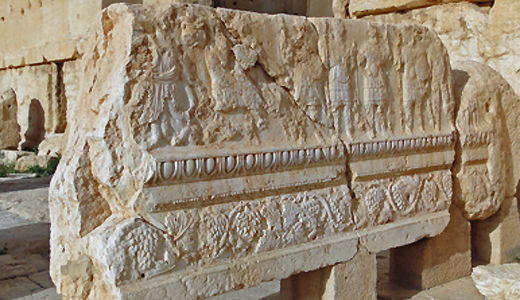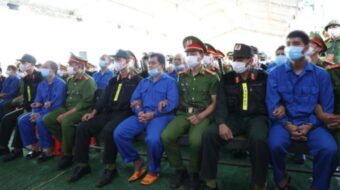
Islamic State (Isis) terrorists bragged that they had “destroyed” the 2,000-year-old Temple of Bel in Palmyra, Syria.
The abandoned city – a major trading hub of the late Roman empire, on caravan routes to Persia, India and China – fell to Isis in May, leading to fears that the terror group would vandalize its ancient monuments as it has churches, mosques and shrines across Syria and Iraq.
The Temple of Bel consisted of a central shrine within a colonnaded courtyard with a large gateway, within a complex that has other ruins, including an amphitheater and some tombs. Before the outbreak of Syria’s conflict in March 2011, the UNESCO site of Palmyra was one of the top tourist attractions in the Middle East.
Earlier this month Isis released footage of the decapitated body of 82-year-old antiquities department chief Khaled Asaad, whose body was later hung from the city’s Roman ruins as punishment for overseeing “idols” (pre-Islamic artifacts) and attending “infidel meetings” (international archaeological conferences).
The temple was considered unique in architectural circles for its mixture of Greco-Roman and Near Eastern styles. A huge explosion was reported by locals, but Isis has restricted access to the site, meaning the extent of damage is still unclear.
Former Syrian official Amr al-Azm, now a professor at Shawnee State University in the U.S., said the destruction “truly demonstrates Isis’s ability to act with impunity and the impotence of the international community to stop them.”
Syrian government efforts to stamp out the genocidal group have been hampered by arms and money flowing to Islamist extremists from the autocratic monarchies of Saudi Arabia and Qatar, as well as by assistance given by the United States and its allies to so-called “moderate” rebels. Isis is also believed to be selling looted antiquities.
Recent attacks by Turkey on Kurdish organizations operating in Iraq and Syria, which have so far proved the most dogged resistance to Isis’s expansion, have given Isis an additional boost.
Imad al-Rishawy, the mayor of the Isis-held town of Rutbah in Iraq’s Anbar province, reported yesterday that the group was holding 200 locals at an unknown location and his townspeople feared for their lives.
Clashes had broken out between residents and the terrorists after an Isis operative was killed in a “long-running clan blood feud,” he said.
Isis killed the man responsible, sparking mass demonstrations after which it rounded up hundreds of people. Some were tied to streetlight poles for 24 hours as punishment but “around 200” had disappeared, Mr. Rishawy said.
Photo: Relief in the temple of Bel depicting Palmyrene war gods, by Bernard Gagnon – Own work. Licensed under Public Domain via Commons.












Comments